
|

|
|
| Home | Instruments | Science | Experiments | SiteMap |
Intro Previous page
In the previous refinement steps we obtained quite good agreement between the computed pattern and the observed diffraction data, with a Chi2 value of 2. CW neutron data have very regular peaks shapes and can often provide significantly better fits. Improving the fit allows perhaps slightly better values for the derived parameters, but more importantly offers smaller error estimates (standard uncertainties).
GSAS/EXPGUI Alumina tutorial (part 11)
Finishing Up
In this final step we will allow each atom to have independent Uiso parameter, we will add more background terms, and we will switch the profile function to use the Finger-Cox-Jephcoat asymmetry parameter, which does a better job of modeling low-angle asymmetry.
To delete the displacement factor constraint, go to the Constraints panel, and select the Delete check button to the right of the constraint, as shown below. Then press the "Delete" button below it, near the bottom of the window.
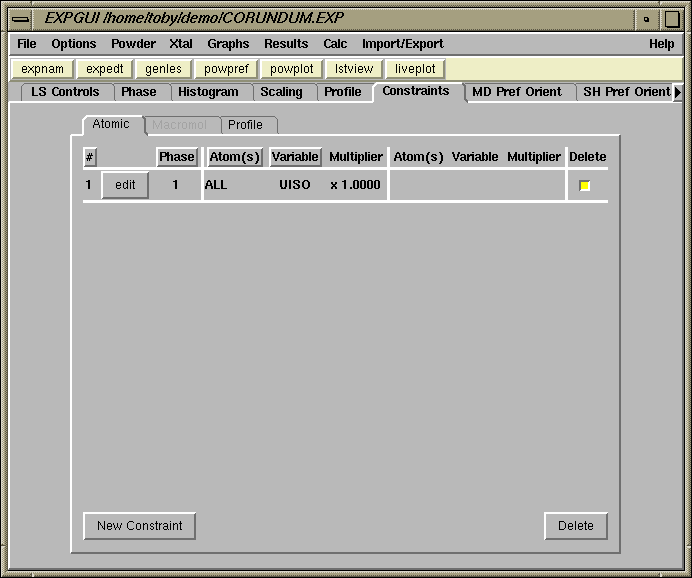
The program then prompts, as shown to the right, to confirm deleting the constraint.
The constraint no longer appears in the panel, as shown below.
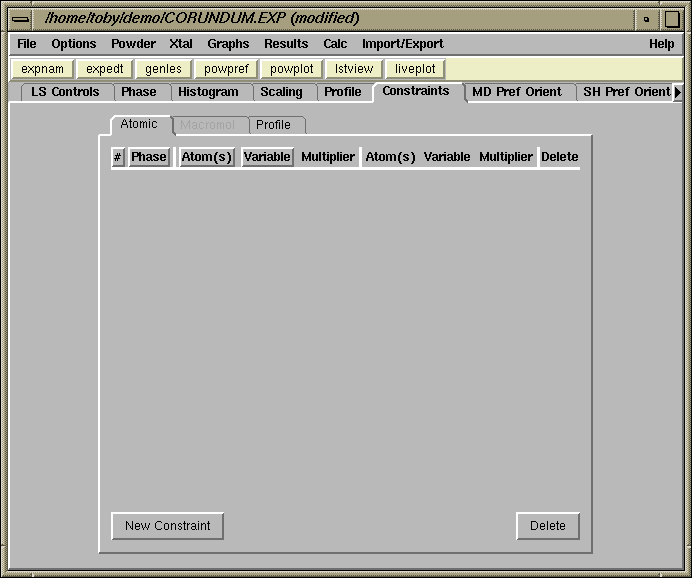
To increase the number of background terms, select the Histogram panel, and press the "Edit Background" button, as was done in part #4. The window to the right is then created. Click on the "Number of terms" pull-down menu and select 12 terms.
To change the profile function, go to the Profile panel and press the "Change Type" button. This opens a window where the function can be selected and where the starting value for each profile parameter can be set. Set the function type to 3 and see how the number of terms expands to what is seen below.
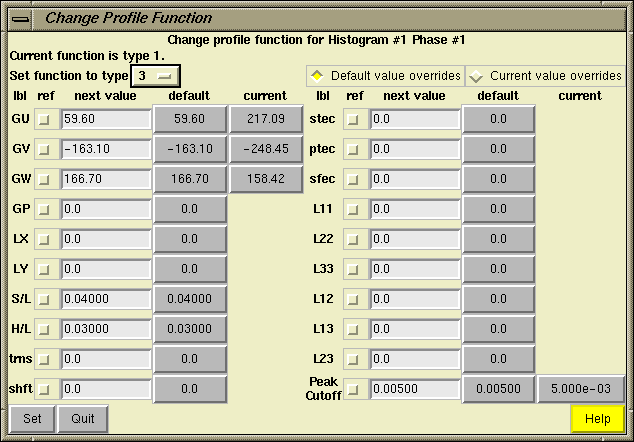
Note that the instrument parameter file usually contains default values for the various profile terms. The values constitute the left-hand columns of buttons. Where two terms are used the same way in different profile functions, the previous value is shown in the right-hand column.The profile functions are described in detail in the GSAS documentation. For the CW neutron and x-ray functions, the functions can be summarized as follows:
- Type 1: Simple Gaussian peak shapes, poor asymmetry correction; appropriate for CW neutrons only.
- Type 2: Pseudo-Voight function, poor asymmetry correction; good for refinements where low-angle peaks are not significant
- Type 3: Similar to type 2, except this includes the Finger-Cox-Jephcoat asymmetry correction. Good even with significant low angle peaks.
- Type 4: Similar to type 3, except this includes the Stephens model for anisotropic strain broadening (where different classes of reflections have different widths).
As is shown below, press on the "Current" button for GU, GV and GW, to change the starting values for those parameters to what was obtained previously, rather than the values in the instrument parameter file.
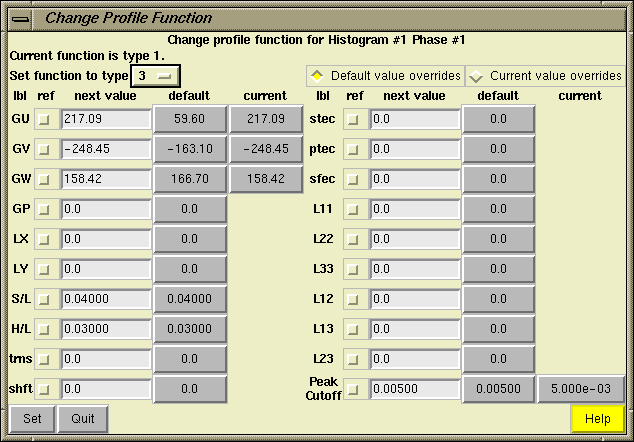
Again select GU, GV and GW for refinement in the Profile panel, as below.
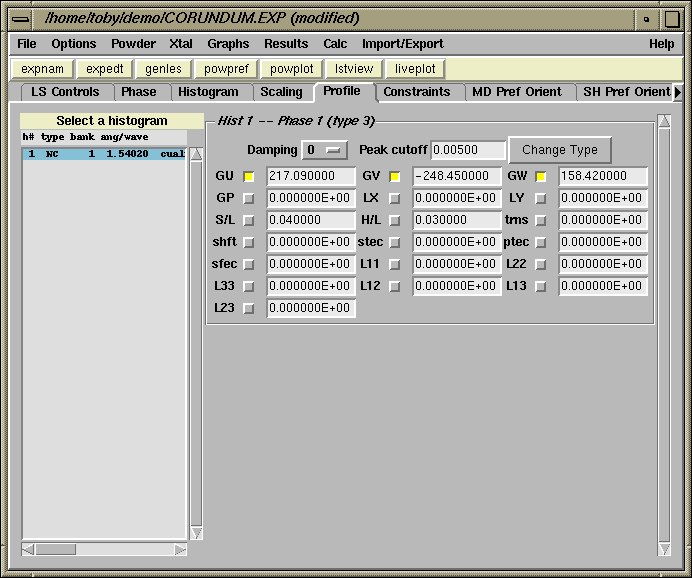
With these extra parameters, the refinement converges with still better values for the agreement factors, as seen below.
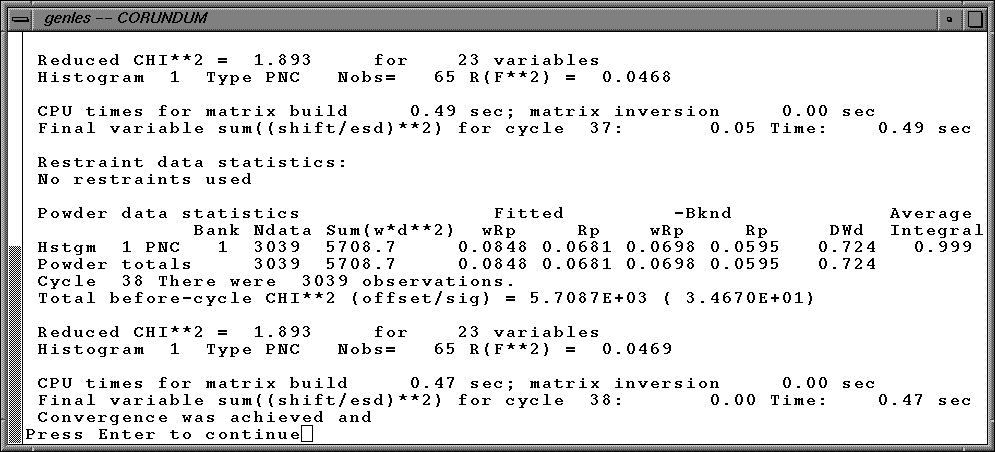
Since the diffractometer constants and profile terms have been changed, POWPREF should be run again.

The Chi2 and Rwp improve even more when GENLES is run, indicating that the previous run of POWPREF was needed.
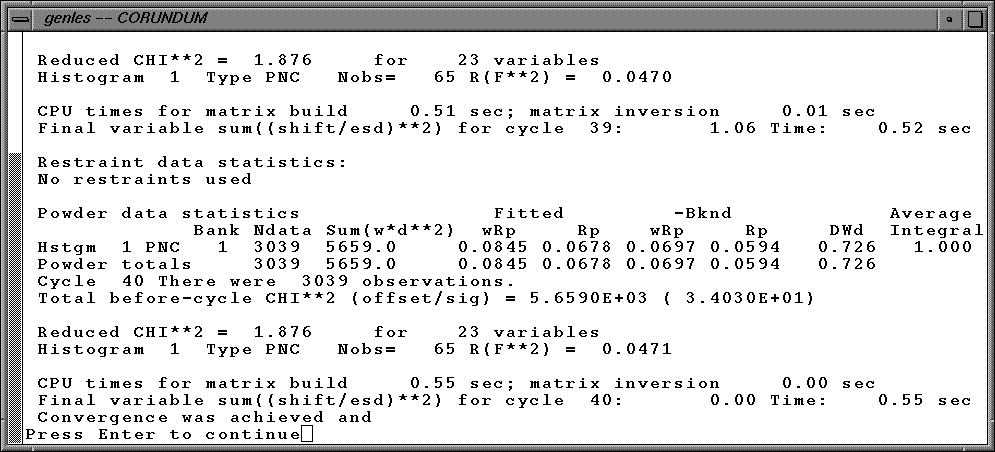
The resulting fit is quite good. By turning on "Cumulative Chi-squared" in the Options menu, the purple line diagonal line is shown. This highlights the worst fit areas of the pattern in terms of their impact on the weighted profile r-factor (Rwp) or in Chi2.
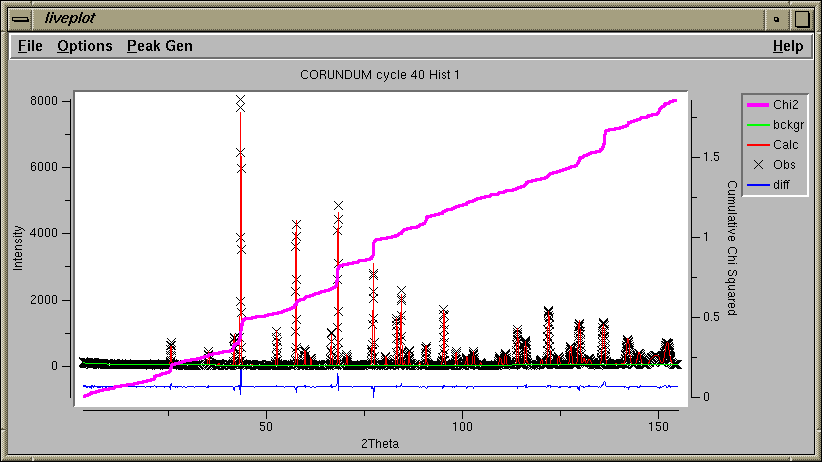
The Cumulative Chi-squared plot was first demonstrated by W. I. F. David at the Accuracy in Powder Diffraction Meeting-III (2001) (See the LIVEPLOT documentation for more information. The line would have a constant slope (slope=1), if all regions of the data are fit at the statistically expected level. The areas where the Cumulative Chi-squared has a much greater slope are regions that have poorer fits.
Previous: Group Uiso parameters & Refine coordinates and Overall Uiso.
Comments, corrections or questions: crystal@NIST.gov
Last modified 18-July-2003
$Revision: 1.3 $ $Date: 2003/07/18 18:32:33 $